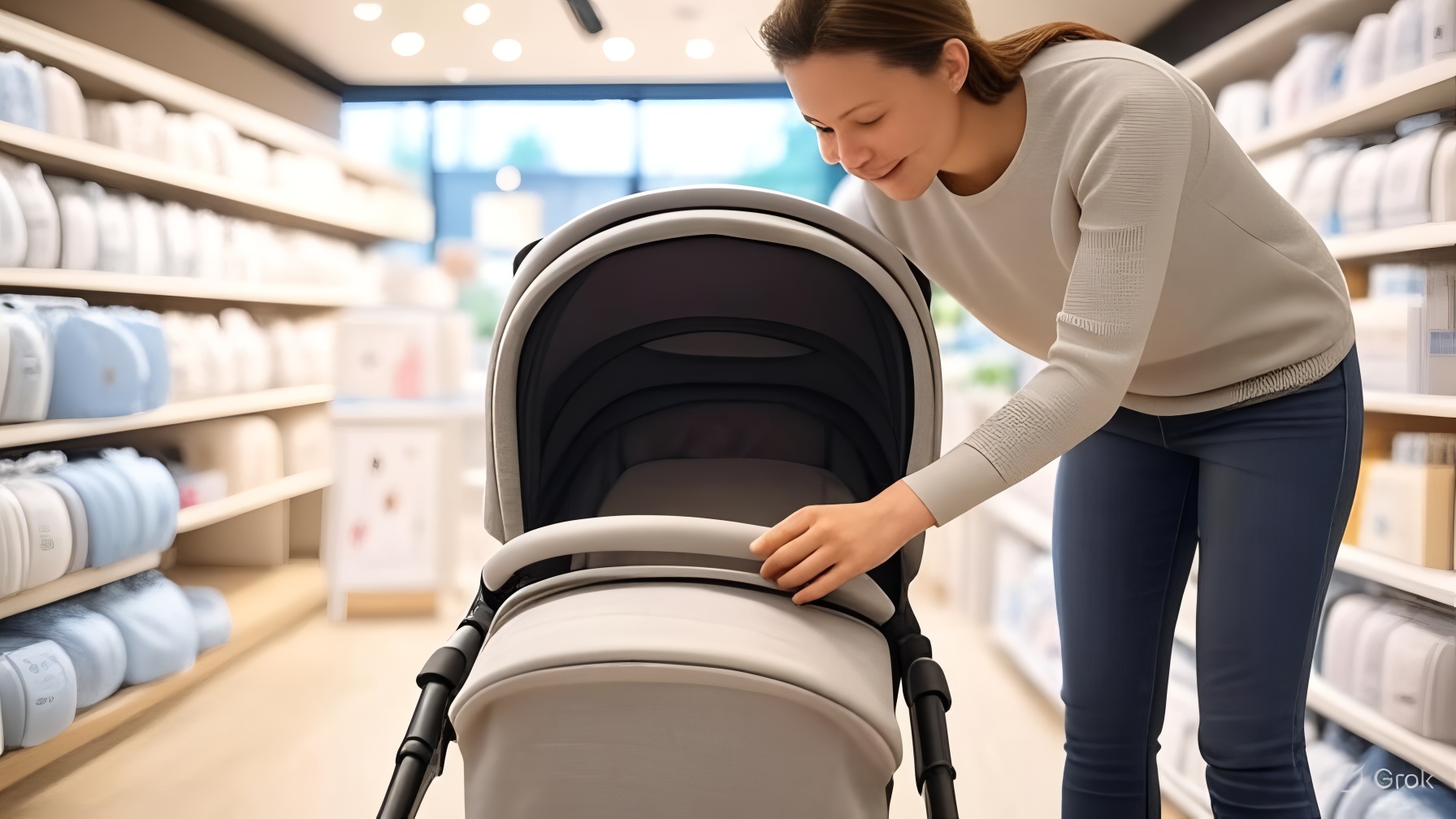Traveling with young children can transform a simple trip into a memorable adventure, but it also comes with unique challenges. A stroller is often a parent’s best ally, providing a safe and comfortable way to transport little ones through bustling airports, crowded city streets, or sprawling theme parks. However, navigating the logistics of traveling with a stroller requires preparation and know-how. From selecting the right stroller to mastering airport procedures and ensuring your child’s comfort, this comprehensive guide offers practical tips and tricks to make your family travels smoother and more enjoyable. Whether you’re embarking on a cross-country flight or a road trip, these strategies will help you travel with confidence.
Why Strollers Are Essential for Family Travel
Strollers are more than just a mode of transport; they’re a lifeline for parents on the move. They keep children secure, provide a place for naps, and double as storage for essentials like diapers, snacks, and toys. Research suggests that a well-chosen stroller can significantly reduce travel stress by offering convenience and familiarity for both parent and child. However, traveling with a stroller involves understanding airline policies, security protocols, and destination-specific needs. By planning ahead, you can avoid common pitfalls and ensure a seamless travel experience.
Choosing the Right Travel Stroller
The first step to successful travel with a stroller is selecting one suited for the journey. Not all strollers are created equal, and travel demands specific features to ensure ease of use. Here are key factors to consider when choosing a travel stroller:
-
Lightweight Design: A stroller weighing 13-16 pounds is ideal for travel, making it easy to carry through airports or stow in a car trunk. Lightweight models reduce physical strain, especially when navigating busy terminals.
-
Compact Fold: Look for a stroller that folds quickly, preferably with one hand, to simplify transitions during security checks or boarding. Some models fold small enough to fit in airplane overhead bins, typically within 22 x 14 x 9 inches, the standard carry-on size for most U.S. airlines (U.S. News Travel).
-
Maneuverability: A stroller with good turning radius and smooth wheels can handle crowded airports, narrow aisles, or uneven surfaces like cobblestone streets. All-terrain wheels are a bonus for destinations with varied landscapes.
-
Durability: Travel can be tough on gear, so choose a stroller with a sturdy frame to withstand the bumps of transit. A reinforced frame ensures longevity, even with frequent use.
-
Comfort Features: A reclining seat, ample sunshade, and sufficient storage enhance your child’s comfort and your convenience. Look for models with peek-a-boo windows to keep an eye on your little one.
Some travel strollers are designed to meet airline carry-on requirements, allowing you to bring them on board instead of gate-checking. Always check your airline’s size restrictions to confirm compatibility. For example, a 2025 review highlights strollers that are “ultra-light, ultra-compact options that you can fold one-handed and sling over your shoulder” (Parents).
Preparing for Your Trip
Proper preparation sets the stage for a stress-free travel experience. Here’s how to get your stroller ready and plan for the journey:
-
Research Airline Policies: Most U.S. airlines, such as Delta, American Airlines, United, and Southwest, allow one stroller per child to be checked for free, either at the ticket counter or gate (CheapAir). However, policies vary, especially for international carriers, so visit your airline’s website to confirm size, weight, and checking procedures. For instance, Air Canada’s 2025 policy notes that Economy Basic fares may require a fee for carry-on bags, including strollers, on certain routes (Air Canada).
-
Invest in a Stroller Bag: A padded stroller bag protects your stroller from scratches, dents, or more severe damage during transit. Some manufacturers offer travel bags with programs that cover damage incurred during air travel, enhancing peace of mind. Label the bag with your contact information to prevent loss.
-
Inspect and Clean: Before your trip, check the stroller for loose parts, worn wheels, or damaged harnesses. Clean the fabric and frame to ensure it’s hygienic and presentable, as dirty strollers may raise concerns at security.
-
Pack Smart: Use the stroller’s storage basket to carry essentials like diapers, wipes, snacks, water bottles, and a change of clothes. An X post recommends including “extra diapers, wipes, swim diapers, hat, water cup, and maybe a stroller fan” for added convenience (@gsdboymom).
-
Practice Folding: Familiarize yourself with the stroller’s folding mechanism to streamline processes at security or boarding. Practicing at home can save time and reduce stress in high-pressure situations.
Navigating Airports with a Stroller
Airports can be chaotic, but with the right strategies, you can navigate them smoothly with a stroller:
-
Gate-Checking: Gate-checking allows you to use the stroller until boarding, making it easier to manage children and luggage in the terminal. Request a gate-check tag from airline staff at the boarding gate. Gate-checked strollers are typically returned at the aircraft door upon landing, though larger models may go to baggage claim (CheapAir).
-
Security Procedures: At security checkpoints, you’ll need to remove your child from the stroller and fold it for X-ray screening. The Transportation Security Administration (TSA) requires strollers to be screened by X-ray or visual/physical inspection if they don’t fit (TSA). Using a baby carrier can free up your hands, though you may need to remove the child for screening in some cases. Arrive early to account for extra time at security.
-
TSA PreCheck: If enrolled in TSA PreCheck, you can use faster screening lines, which is especially helpful with children. Children 12 and under can accompany PreCheck-enrolled adults without their own membership (Diapers in Paradise).
-
Stay Organized: Keep travel documents and essentials easily accessible. A baby carrier can be a lifesaver for infants, allowing you to fold the stroller without juggling a child.
On the Flight
Once you’re ready to board, here’s how to handle your stroller during the flight:
-
Carry-On Option: If your stroller is compact enough (typically within 22 x 14 x 9 inches), you may be able to store it in the overhead bin, avoiding gate-checking. Confirm with your airline, as some regional flights have smaller bins (American Airlines).
-
Gate-Checking Process: For larger strollers, gate-check at the jetway. Remove all personal items before handing it over, and ensure it’s properly tagged. Upon arrival, retrieve it at the aircraft door or baggage claim, depending on the airline’s policy.
-
Comfort on Board: If you’re not using the stroller on the plane, a baby carrier can keep your infant comfortable and secure, freeing up space and simplifying movement in tight cabin spaces.
At Your Destination
Once you’ve arrived, your stroller becomes a vital tool for exploring your destination:
-
Terrain Compatibility: Research your destination’s terrain to ensure your stroller is suitable. For urban areas with smooth pavements, a lightweight stroller works well. For cobblestone streets or parks, consider a model with larger, all-terrain wheels. An X post notes that some strollers handle “cobblestone streets, botanical gardens” well, even with heavy loads (@agnesgirl10).
-
Stroller Rentals: If bringing your own stroller is impractical, consider renting one at your destination. Services like BabyQuip and Traveling Baby Company offer clean, quality strollers delivered to your hotel or airport. This is especially popular at family-friendly destinations like Disney, where rentals can be more cost-effective and convenient than park-provided options (Orlando Stroller Rentals).
-
Weather Preparedness: Equip your stroller with accessories like sunshades, rain covers, or stroller fans to handle varying weather conditions. A stroller fan is particularly useful in hot climates, as recommended by an X post for “90+ degree heat” (@agnesgirl10).
-
Storage and Naps: Use the stroller as a mobile storage unit for snacks, drinks, ponchos, and other essentials. It can also serve as a nap spot for tired children, especially at destinations with extensive walking, like theme parks (@Wraithlaw42).
General Tips and Tricks
These additional tips will enhance your travel experience and keep your child safe and comfortable:
-
Child Comfort: Pack items to keep your child happy, such as favorite toys, blankets, or snacks. Ensure they stay hydrated and fed, especially during long travel days. A reclining seat and sunshade can make naps more comfortable.
-
Safety First: Always use the stroller’s five-point harness to secure your child. Check the weight limit to avoid overloading, which can compromise stability.
-
Protect Your Stroller: Airlines may not always cover damage to gate-checked strollers, as they’re considered oversized baggage (Riverbaby Group). Use a padded stroller bag and document the stroller’s condition with photos before and after travel to support any claims. Some manufacturers offer travel bags with damage coverage programs.
-
Backup Plan: If your stroller is damaged or lost, contact the airline immediately to file a claim. The U.S. Department of Transportation notes that airlines are responsible for damage occurring during transit, but liability may be limited for improper packing or pre-existing damage (DOT). Consider travel insurance that covers baby gear for added protection.
-
Label Everything: Attach a tag with your name and contact information to the stroller to facilitate recovery if misplaced.
-
Road Trip Considerations: For road trips, ensure the stroller fits in your vehicle’s trunk. Use it at rest stops or for walks at destinations to give your child a break from the car seat.
|
Travel Scenario |
Stroller Tips |
Key Considerations |
|---|---|---|
|
Air Travel |
Use a lightweight, compact stroller; gate-check or carry on if possible. |
Check airline size limits; use a stroller bag for protection. |
|
Airport Navigation |
Gate-check to use stroller until boarding; use baby carrier for security. |
Arrive early; consider TSA PreCheck for faster screening. |
|
Urban Destinations |
Choose a maneuverable stroller for crowded streets and public transport. |
Ensure compact fold for buses or trains. |
|
Outdoor Adventures |
Opt for all-terrain wheels for parks or trails. |
Check weight limit for rough surfaces. |
|
Theme Parks |
Rent a stroller for convenience; use as storage and nap spot. |
Research rental services like BabyQuip for quality options. |
Conclusion
Traveling with a stroller can transform a potentially stressful journey into a manageable and enjoyable experience. By choosing a lightweight, compact stroller, preparing for airline and security procedures, and planning for your destination’s unique needs, you can ensure a smooth trip for your family. Whether you bring your own stroller or rent one at your destination, these tips and tricks will help you navigate the challenges of travel with confidence. Pack smart, stay organized, and embrace the adventure of exploring the world with your little one by your side.




